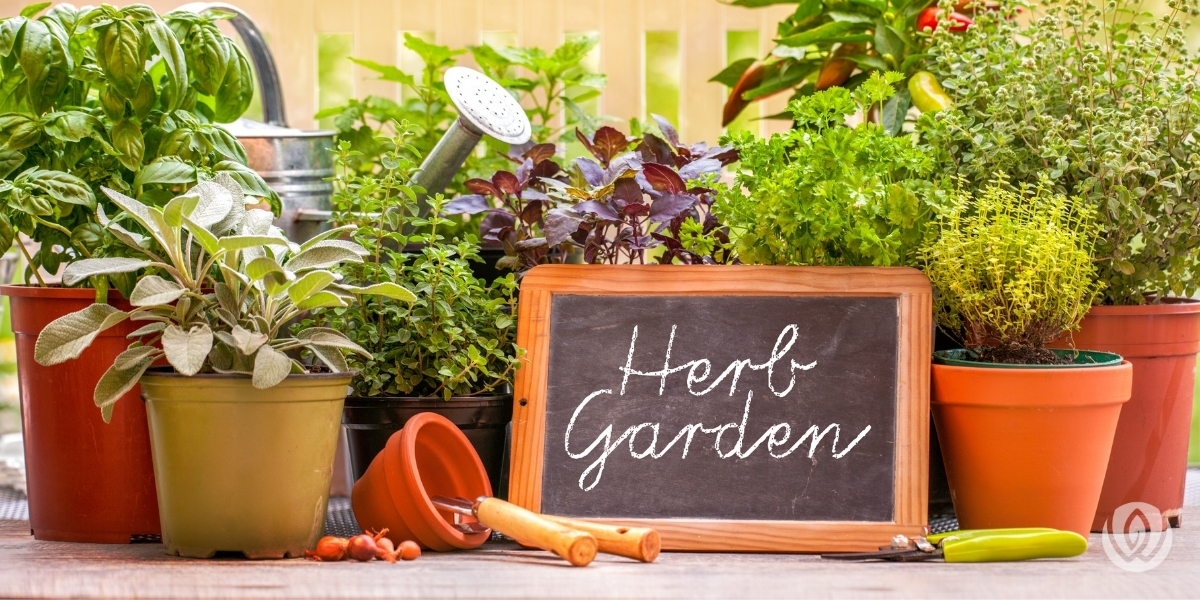
Farm-to-table dining is quite popular these days. But how about backyard-to-table or patio-to-table? It’s actually quite easy. Today, we’re going to show you how to start an herb garden in five easy steps. And we’re talking about an outside herb garden, although some of the steps are similar if you wanted to do one indoors.
If you already have a vegetable garden, it may be easy to just carve out space for your herbs. Or, you can create a new garden bed from scratch by removing turf grass and amending the soil.
Another option is to start an herb garden in a raised bed or planter. You can set this up on your patio near your kitchen door. You can build your planter or raised bed from a kit. We’ve even seen people use large plastic kiddie pools.
Yet another possibility is to grow all of your herbs in pots. Keep in mind this will require you to water them more frequently. The pots can sit on a table, on the ground, or you can create a vertical garden wall and place your pots there.
Based on whether your space is in full sun or partial sun, the next step is to choose your herbs. Save time and effort by doing a little research on this before you select your space.
Then, pick herbs you like to use when cooking. You can also choose herbs that serve a dual purpose. For instance, some herbs repel mosquitoes. That's a winning combination!
Whether you’re planting in the ground, a raised bed, or in pots, many of the directions are the same. Follow the directions on the plant tag when digging the hole, and deciding how far apart to place the plants. Fill in around the plant, pat down the soil, and water well.
If you’re planting mint or marjoram, plant it in its own container to prevent it from spreading and overtaking your garden.
Check on your plants daily. This can be easy if they are on your patio. If they’re in pots, you will need to water more frequently. Water when the top inch of soil is dry, or if you notice drooping leaves. You can also fertilize them with liquid plant food specially made for tomatoes, fruits, and vegetables.
Herbs actually thrive, growing thicker and bushier when you snip them or pick their leaves often. Some people prefer harvesting in the morning, but harvesting when you’re cooking dinner is a fine time as well. Just step outside and snip as much or as little as you need. And remember to be careful not to harvest more than 1/3 of the plant at a time.
Once you’ve started growing your own fresh herbs, it will become a summertime ritual. You’ll start using recipes that incorporate fresh herbs, and you may even have enough to dry and store, or use a lot of basil to make fresh pesto that you can then freeze (scroll down for tips).
And the good news is, you won’t have to buy fresh herbs in one of those clamshells from the grocery store. We don’t know about you, but half the time we buy those, we get more than we need, and some of the herbs dry up or get slimy before they get used. That won’t happen with live herbs in your garden!
Watch these videos for two ways to freeze an abundance of basil.
1. How To Freeze Pesto for Future Use // Pesto Prep Step 2
2. How to Freeze Basil | The Best Method For Flavorful Basil
It’s not something we do often, but if you need help starting an herb garden, we could incorporate it into your overall landscape design services. We may also be able to help you with the structure for a vertical garden or create a built-in raised bed as part of your new patio.
If you’re looking to upgrade your outdoor living space, we can help. Schedule a consultation using the contact form, or call us at 301.720.1000. We work with homeowners in the Capital Region, including Maryland, DC, and Northern Virginia.
